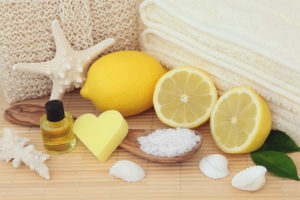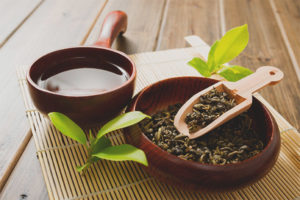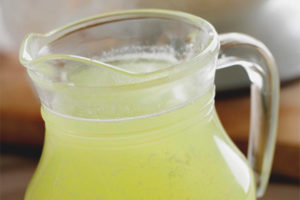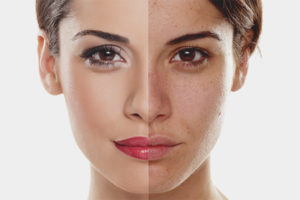The content of the article
Human skin is affected by many factors. These include weather conditions, cosmetics, basic care, diet, proper sleep, lifestyle. All this affects the state of the epidermis and its type. The latter can even change every 2-3 years. When choosing caring products, people focus on the type of skin, and rightly so. We will talk about how to determine it below.
Skin Type Test
The procedure is carried out using a regular paper towel, which is probably available in your kitchen. If it is absent, use a thin sheet of paper, a cosmetic scarf (dry). The test is performed 3 hours after the usual washing procedure. Cosmetics in this case must be removed.
Lie down comfortably, place the selected paper attribute on your face. Napkin or sheet should be located on the entire surface of the skin. Press with your hand, wait a quarter of an hour. After a specified period of time, begin to evaluate the result.
You will see “wet” spots on the entire surface of the paper; they indicate that these places of the napkin were located on greasy areas of the face.
If the leaf is dry, a similar aspect indicates the appropriate type of skin.
When you see that the sheet is impregnated ambiguously, that is, there are greasy and dry places, the skin is mixed. In 80% of cases, women observe this particular option.
Characteristics of different skin types
To verify the result of the test, examine the additional characteristics inherent in each type of skin.
Normal skin
- This type of epidermis is extremely rare, especially when it comes to residents of contaminated metropolitan areas. The skin is characterized by elasticity, even shade and relief, the absence of contamination in the pores and gloss.
- Normal skin does not peel off, there are no signs of rosacea (vascular networks) on the face, spots, purulent phenomena, rashes.
- Skin of this type corresponds to tightness and dryness after washing. But these sensations disappear in an hour and a half.
- Due to the correct formation of the lower layers, the skin is not peeled in winter or summer.
- Owners of such an epidermis retain youth for a long time. Even at the age of 45-50 they look much younger. The pH balance is 5.5 units.
Dry skin
- The main signs of the epidermis of this type is the complete absence of acne, purulent inflammation, acne and other dermatological problems. Simply put, dry skin is not prone to such manifestations.
- The epidermis has small closed pores, the skin is thin, peeling in places. The face looks dull, no oily sheen. The skin is as soft as velvet.
- Dry skin is easy to detect with a sharp change in temperature. Irritation and peeling appear on the face. Cosmetics, soap, cream - all this also leads to peeling.
- Most often, dry skin undergoes tightness after washing, sometimes an allergy to new cosmetics appears on the face. This type of skin corresponds to a pH balance in the region of 3-5.5 units.
- Dry skin ages quickly, as a result, by the age of 35, many wrinkles appear on it. By 45, the face is literally incinerated with creases and bumps.
- This type of epidermis lacks retinol, ascorbic acid, and vitamin PP. Most often, this is a hereditary factor, but in some, the type changes with age.
Combination skin
- The type of skin corresponds to the presence of oily sheen on the nose, interbrow region, chin, middle of the forehead, and temples. At the same time, the cheeks, neck, and base of the hairline are absolutely dry.
- The epidermis looks tired in the eye area.The face often peels, creases and facial wrinkles quickly appear on it. At the same time, the polished areas are “famous” for the presence of open comedones and acne.
- Signs of aging are noticeable in people aged 30+. Starting at age 45, the skin suffers a tremendous lack of moisture, a person looks older than his age.
- The mixed type is formed due to improper care or its absence. The pH balance sometimes reaches 6 units. The skin looks gray with large pores.
Oily skin
- This option differs from others in a strong grease, which is visible on the whole face. The skin has large open pores, they are often contaminated.
- On the face, you can often find comedones, purulent acne and other formations of this type. After washing, red spots appear, but there is no feeling of tightness.
- Enhanced fat production has several advantages. The skin does not lose moisture, so it almost never peels off. On such a face, wrinkles appear later than on a mixed one.
- The hydrogen index, or pH balance reaches a mark of 6 units. Most often, adolescents and people under 30 have this type. Then oily skin becomes combined.
How to care for different types of skin
- Dry skin, despite its features, can look appropriate. In this case, the dermis requires individual care. It is mandatory to consume 1.5 liters. filtered water per day.
- Washing should be carried out with a light cosmetic lotion. At the same time, it is recommended to pat the skin slightly. In the tissues, blood circulation improves. Instead of cosmetics, fatty dairy and sour-milk products of natural production are quite suitable.
- It is recommended to keep the animal product until completely absorbed; remove residues with non-hot water. Wipe your face regularly with ice cubes based on a herbal decoction. Apply a nutritious composition with ceramides, essential oils and UV protection.
- After a hard day, the face needs to be cleaned with directed milk, after it - with a special lotion. Before rest, pamper your skin with a moisturizing and night cream. Do not forget to apply light scrubs and nourishing masks for the dry type.
- With this type, the area around the eyes is most sensitive, therefore, proper care must be carried out already from the age of 22. On frosty and windy days, apply the cream on the face in advance. In this case, washing is allowed exclusively with purified water.
- It is forbidden to visit saunas and pools where water contains a high concentration of bleach. If you decide to lie down on sunny days on the beach, always wear a wide-brimmed hat. Forget about cosmetics based on alkali or alcohol. Such products will aggravate the situation.
Normal skin
- The epidermis is less whimsical, but daily care is also necessary. Take the habit of washing exclusively with cold water.
- To circulate blood properly, knead your neck more often and twist your head in different directions. Do not forget about light pats when washing.
- Wipe the skin with ice cubes, always apply moisturizers after washing. Before going to bed, the dermis should be cleansed with mousse. Take the habit of making clay masks or scrubs once a week. Steam the skin before the procedure.
Combination skin
- Daily care is required, especially at the age of 35+. Regularly cleanse the T-zone with gel or milk for combination skin only. Next, you need to treat the face and décolleté with cotton disks soaked in tonic.
- The final step is to apply a moisturizer. Such manipulation must be carried out after waking up and before bedtime. Application of night cream is allowed, bypassing the T-zone. Deep cleaning should be done twice a week. In this case, scrub or peeling is used exclusively in the T-zone.
Oily skin
- To bring the skin in order and narrow the pores, you have to make a lot of effort.Every day it is necessary to clean several times with a special gel, lotion or tonic without alcohol.
- Cosmetics are recommended to rinse with water at room temperature. After cleansing, use humidifiers. The use of creams is prohibited, they clog pores.
- Before going to bed, wash, wipe your face with a tonic, and apply an antibacterial agent. Applying a night cream is contraindicated. Peel twice a week.
Depending on the type of skin, you need to be able to correctly solve possible problems and apply suitable cosmetics. Consider individual features so as not to aggravate the situation.
Video: how to determine your skin type











Submit